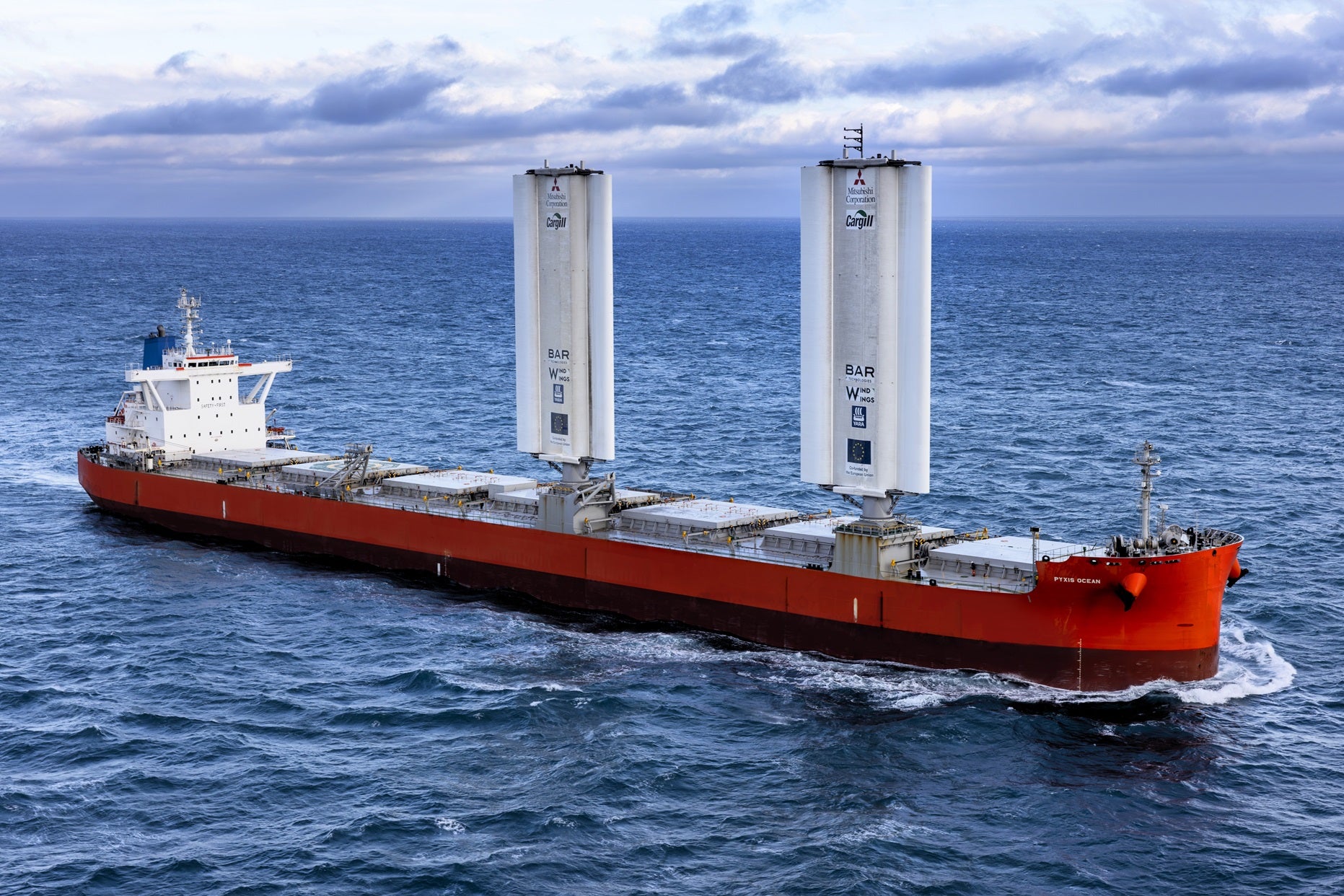Cargo ship with futuristic sails saves thousands of tonnes of fuel in first test
Pyxis Ocean fitted with WindWings sails travelled across Atlantic Ocean, Indian Ocean and Pacific Ocean
Your support helps us to tell the story
From reproductive rights to climate change to Big Tech, The Independent is on the ground when the story is developing. Whether it's investigating the financials of Elon Musk's pro-Trump PAC or producing our latest documentary, 'The A Word', which shines a light on the American women fighting for reproductive rights, we know how important it is to parse out the facts from the messaging.
At such a critical moment in US history, we need reporters on the ground. Your donation allows us to keep sending journalists to speak to both sides of the story.
The Independent is trusted by Americans across the entire political spectrum. And unlike many other quality news outlets, we choose not to lock Americans out of our reporting and analysis with paywalls. We believe quality journalism should be available to everyone, paid for by those who can afford it.
Your support makes all the difference.A cargo ship equipped with high-tech sails saved up to 11 tonnes of fuel per day, according to findings from a six month test of the technology.
The Pyxis Ocean, owned by Japanese automaker Mitsubishi, was retrofitted with two WindWings sails in August 2023 and has since passed through the Atlantic Ocean, Indian Ocean and Pacific Ocean.
“In near optimum sailing conditions, during an open sea voyage, the Pyxis Ocean achieved fuel savings of 11 tonnes per day,” said John Cooper, chief executive of BAR Technologies, who developed the sails.
“And while the Pyxis Ocean has two WindWings, we anticipate the majority of Kamsarmax vessels will carry three wings, further increasing the fuel savings and emissions reductions by a factor of 1.5.”

These huge fuel savings – totalling thousands of tonnes per year – could see half of new-build ships featuring wind propulsion by 2025, according to Mr Cooper.
The WindWings sails measure 37.5 metres (123 feet) in height, dwarfing the Pyxis Ocean’s bridge but only taking up a relatively small space of the ship’s cargo holds.
Operation of the sails is fully automated, meaning the crew only needs to raise or lower them to benefit from the additional power.
In 2023, the International Maritime Organisation (IMO) adopted a strategy to reduce carbon emissions from the shipping industry – estimated to be responsible for about 2.1 per cent of global CO2 emissions – by at least 40 per cent by 2030.
Part of this strategy involves increasing zero of near-zero emission technologies so that they represent 10 per cent of energy used by international shipping by the end of the decade.
According to Cargill, a US-based shipping firm who chartered the Pyxis Ocean during the tests, WindWings could form a key part of reaching these targets.
“We are encouraged by the results and have learned a great deal about implementing wind assisted propulsion on dry bulk vessels,” said Jan Dieleman, president of Cargill’s Ocean Transportation business, who revealed that more than 250 ports have been consulted to accommodate the next-generation ship.
“[We] believe technologies that harness the wind could be an important, cost-effective way to achieve our decarbonisation goals in the short, medium and long-term.”

Join our commenting forum
Join thought-provoking conversations, follow other Independent readers and see their replies
Comments